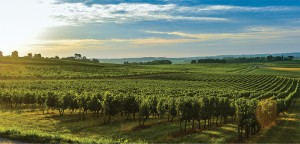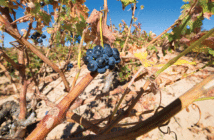
A new study of six of New Zealand’s major wine-growing regions has found that differences in flavour and aroma of wine from different areas may depend more on microbes than was previously thought.
A new study of six of New Zealand’s major wine-growing regions has found that differences in flavour and aroma of wine from different areas may depend more on microbes than was previously thought.
Classically the reason that wine, and other agricultural crops such as coffee, from different places tastes and smells different was thought to be due to a range of environmental reasons such as climate and soil minerals. The idea that organisms such as microbes played a role in this was not appreciated until very recently.
Previous work by Associate Professor Mat Goddard and Research Fellow Sarah Knight from the University of Auckland School of Biological Sciences demonstrated that different regions of New Zealand have different types of the main yeasts (Saccharomyces cerevisiae) that ferment juice into wine.
The latest research, published in Nature’s Scientific Reports, investigates whether yeasts from these regionally genetically different populations made any difference to a range of wine compounds known to affect aroma and flavour.
Starting with the same grape juice they made replicate batches of wine with the genetically different types of yeasts from six different areas in New Zealand, and then analysed the concentrations of 39 different compounds, known to be derived from yeast during the fermentation process, that affect the flavour and aroma of wine. They found that 29 of these compounds vary depending on which region the yeast originated from.
Dr Goddard said: “We believe that this is the first direct experimental evidence showing that microbes help define why you get different wine in different places, or the idea of ‘terroir’. The regional distinctiveness of wine plays a major part in its value, and there is a lot of interest in what drives terroir. Classically it was thought that it was down to climate and soils, but our research shows biology also plays a part.
“These findings could be very important because if this is true for wine, it may also be true for other agricultural crops.”
The researchers believe that their study could have wide-ranging implications for sustainable agriculture. Their findings indicate the importance of characterising and understanding biodiversity and the services it may provide, and this could therefore be extended to other important agricultural commodities.
The research was conducted as part of New Zealand Winegrowers and Plant & Food Research’s wine research programme, which aims to identify the key components of vineyard management and winemaking that influence wine flavour and aroma, particularly those that contribute to the unique flavours found in Marlborough Sauvignon blanc.




























































































